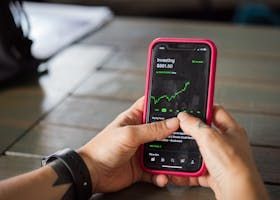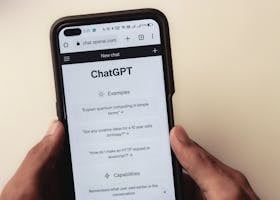Quick Answer: A systematic 90-day follow-up approach combining value-driven touchpoints, strategic timing, and referral-specific requests can double your referral rate by transforming dormant past clients into active advocates. The key lies in consistent value delivery, relationship maintenance, and making referral requests feel natural and beneficial for clients.
The harsh reality facing most real estate professionals today is that despite closing hundreds of transactions over their careers, their phones aren't ringing with referrals. Industry data reveals that while 89% of consumers would refer their agent to friends and family, only 29% actually do. This massive gap represents the single greatest untapped opportunity in real estate lead generation.
For experienced agents sitting on a database of past clients but struggling with low referral rates, the solution isn't finding new clients—it's systematically reactivating the relationships you've already built. The agents who master this approach don't just survive market fluctuations; they thrive regardless of interest rates, inventory levels, or economic uncertainty.
Current State of Real Estate Referral Generation
The referral landscape in real estate has fundamentally shifted over the past decade. Traditional approaches that relied on sporadic holiday cards and occasional check-ins have become insufficient in today's hyper-connected, value-driven marketplace. Recent studies by the National Association of Realtors show that while referrals remain the number one source of business for top-producing agents, the average agent receives only 2.3 referrals per year from their entire past client database.
This performance gap becomes even more stark when examining top producers. Agents earning over $250,000 annually receive an average of 12.7 referrals per year, while those earning under $50,000 receive just 0.8 referrals annually. The difference isn't luck or charisma—it's systematic relationship management.
The challenge has intensified with changing consumer expectations. Today's past clients expect ongoing value delivery, not just transaction-focused communication. They want market insights, home maintenance tips, neighborhood updates, and financial guidance. Agents who continue using outdated "checking in" approaches find themselves forgotten within months of closing.
Market research indicates that 68% of past clients can't remember their agent's name two years after closing, yet these same clients will make real estate decisions and field real estate questions from friends and family throughout their lifetime. The opportunity cost of poor follow-up systems represents hundreds of thousands in lost commission potential for the average agent.
The Psychology Behind Referral Generation
Understanding why clients refer requires diving into the psychological mechanisms that drive recommendation behavior. Referrals aren't simply about satisfaction with past service—they're about ongoing relationship quality, perceived expertise, and the emotional comfort clients feel when recommending your services to people they care about.
Research in consumer psychology reveals that people refer service providers when three conditions align: expertise perception, relationship trust, and referral confidence. Expertise perception develops through consistent demonstration of market knowledge and industry insights. Relationship trust builds through regular, valuable interactions that show genuine care for the client's wellbeing beyond the transaction. Referral confidence emerges when clients feel certain their referrals will receive exceptional service.
The timing of referral requests plays a crucial psychological role. Studies show that referral likelihood peaks at specific intervals after transaction completion. The highest referral probability occurs between 6-18 months post-closing, when clients have experienced their new home and felt the full impact of your service, but haven't yet forgotten the details of working with you.
Top referral generators understand that people don't refer agents—they refer relationships. This distinction explains why agents with strong technical skills but weak follow-up systems struggle with referrals, while agents who maintain genuine ongoing relationships see consistent referral flow regardless of market conditions.
The Value Exchange Model
Successful referral systems operate on a value exchange model where every interaction provides something beneficial to the client. This isn't about quid pro quo arrangements, but rather establishing yourself as a valuable resource in your clients' lives. When you consistently deliver value through market insights, home ownership tips, local event information, and professional guidance, requesting referrals becomes a natural extension of an already valuable relationship.
The most effective agents position themselves as trusted advisors rather than service providers. This positioning shift changes how clients think about your role in their lives and dramatically increases their comfort level when referring friends and family.
Building Your 90-Day Follow-Up Framework
The 90-day referral acceleration system divides into three distinct phases, each designed to rebuild relationships, demonstrate ongoing value, and create natural referral opportunities. This timeline leverages psychological research on relationship rekindling and behavioral change while providing sufficient time to see measurable results.
Phase One: Relationship Reactivation (Days 1-30)
The first month focuses on reestablishing contact with past clients who may not have heard from you in months or years. The approach requires a delicate balance between providing immediate value and acknowledging the time gap without creating awkwardness.
Begin with a market insights approach that provides genuine value while reintroducing your expertise. Craft personalized messages highlighting specific market trends affecting their neighborhood or property type. For homeowners who purchased in the last two years, focus on equity appreciation and market positioning. For clients who sold properties, provide updates on their former neighborhood's performance and how their timing worked out.
The reactivation sequence should include five touchpoints over the first month, spaced 5-7 days apart. Each touchpoint serves a specific purpose: market value updates, home maintenance seasonal tips, local market news, neighborhood development updates, and financial benefit summaries. This frequency reestablishes your presence without overwhelming busy clients.
Critical to this phase is the "no ask" approach. Resist any temptation to request referrals, reviews, or business during the first month. Focus entirely on relationship rebuilding and value delivery. Clients need time to remember why they enjoyed working with you and to see that your continued contact provides genuine benefit.
Phase Two: Value Establishment (Days 31-60)
Month two shifts focus toward establishing your ongoing value as a real estate resource and trusted advisor. This phase introduces more sophisticated content while beginning to position yourself for future referral requests.
Develop content themes that demonstrate expertise while providing practical value. Home ownership financial tips, market timing insights, investment property opportunities, and refinancing guidance all position you as a knowledgeable resource worth maintaining a relationship with. The goal is becoming someone clients think of when real estate topics arise in their personal or professional conversations.
Introduce social proof elements during this phase. Share success stories from recent clients, highlight market wins, and demonstrate your continued activity and expertise. This isn't about bragging, but rather showing that you remain an active, successful professional worthy of referrals.
Begin incorporating subtle referral language without making direct requests. Phrases like "I love helping families find their perfect home" and "There's nothing better than seeing the excitement when clients get their keys" plant referral seeds while maintaining focus on value delivery.
Phase Three: Referral Optimization (Days 61-90)
The final month transitions toward direct referral cultivation while maintaining the value-driven approach established in previous phases. This phase requires the most finesse, as you balance relationship maintenance with business development goals.
Introduce referral requests through story-telling approaches that feel natural and consultative. Share stories about how you helped other clients in similar situations, then ask if they know anyone facing comparable real estate decisions. This approach feels helpful rather than self-serving.
Implement the "specific ask" strategy by requesting referrals for particular client types or situations. Instead of generic "let me know if you know anyone looking to buy or sell," ask for specific scenarios: "I'm working with several families looking in your neighborhood—do you know anyone considering a move?" This specificity makes referrals easier for clients to identify and feel comfortable making.
Create referral incentive programs that benefit all parties involved. Consider offering home warranty extensions, maintenance service credits, or local business partnerships that provide value to referring clients and their referrals.
Communication Channels and Technology Integration
Modern referral systems require multi-channel communication approaches that meet clients where they prefer to engage. Email remains the primary channel for detailed content delivery, but successful agents integrate text messaging, social media, and direct mail to maximize engagement and recall.
Email communication should focus on substantial, valuable content that clients want to receive and read. Monthly market reports, quarterly property value updates, and seasonal home maintenance guides provide legitimate reasons for contact while demonstrating expertise. The key is creating content clients anticipate and appreciate receiving.
Text messaging works best for brief, timely updates and personal touches. Birthday greetings, anniversary acknowledgments, and breaking market news that affects their property value create positive touchpoints without overwhelming busy schedules. Keep text messages to 160 characters or less and always provide value or personal connection.
Social media integration allows for passive relationship maintenance between direct communications. When past clients see your professional content, successful transactions, and community involvement on their social feeds, it reinforces your expertise and keeps you top-of-mind for referral opportunities.
Technology Stack Requirements
Successful follow-up systems require Customer Relationship Management (CRM) platforms that support automated sequences while allowing for personalization. Look for systems that integrate email marketing, text messaging, and social media management to create seamless multi-channel campaigns.
Database segmentation capabilities are essential for delivering relevant content to different client types. First-time homebuyers need different follow-up content than luxury clients or investment property owners. Your technology should support multiple campaign tracks based on client characteristics and transaction history.
Analytics and tracking features help optimize your follow-up system over time. Monitor open rates, response rates, and referral conversion metrics to identify which content types and communication frequencies produce the best results with your specific client base.
Content Strategy for Maximum Engagement
The content foundation of successful referral systems combines market expertise, practical homeowner guidance, and personal relationship building. Each piece of content should serve multiple purposes: demonstrating knowledge, providing value, and maintaining relationship warmth.
Market analysis content positions you as a local expert worth referring. Monthly market reports customized to specific neighborhoods or property types show clients you understand their local market intimately. Include specific data points, trend analysis, and forward-looking insights that help clients understand their property's position in the current market.
Home maintenance content provides ongoing value while positioning you as a resource for homeownership questions. Seasonal maintenance checklists, energy efficiency tips, and home improvement ROI analysis help clients protect and enhance their investment while keeping your expertise visible.
Financial education content addressing refinancing opportunities, tax implications, and investment strategies demonstrates breadth of knowledge beyond just buying and selling. Many clients don't realize their real estate agent can provide guidance on these topics, so this content expands your perceived value and expertise.
Personalization at Scale
While systematic follow-up requires automation, successful agents find ways to personalize content at scale. Use client data to customize market reports for their specific neighborhood, reference their particular property type in maintenance tips, and acknowledge their unique situation in financial guidance.
Personal touches like anniversary acknowledgments, birthday greetings, and milestone celebrations create emotional connections that purely business-focused content cannot achieve. These touches don't require extensive time investment but significantly impact relationship quality and referral likelihood.
Measuring and Optimizing Your System
The most successful referral systems continuously evolve based on performance data and client feedback. Establish baseline metrics before implementing your 90-day system, then track improvements in engagement rates, referral quantity, and referral quality over time.
Key performance indicators include email open rates, response rates to direct outreach, referral requests received, referral conversations generated, and referrals that convert to closed transactions. Track these metrics monthly to identify trends and optimization opportunities.
Client feedback provides qualitative insights that complement quantitative metrics. Survey past clients about content preferences, communication frequency comfort levels, and referral hesitation factors. This feedback guides system refinements that improve both client satisfaction and referral generation.
A/B testing different approaches helps optimize system components over time. Test different email subject lines, communication frequencies, content types, and referral request strategies to identify what works best with your specific client base.
Common Optimization Areas
Most agents find optimization opportunities in timing, personalization, and value delivery. Timing adjustments might involve changing send days, frequencies, or seasonal content calendars. Personalization improvements could include better segmentation, customized content, or individual relationship notes. Value delivery enhancements might focus on content quality, relevance, or practical applicability.
The goal is creating a system that feels personal and valuable to clients while remaining sustainable for your business operations. The best referral systems require minimal ongoing time investment while producing consistent relationship building and referral generation.
Regional and Market Variations
Referral system effectiveness varies based on local market characteristics, client demographics, and regional communication preferences. Agents in high-turnover markets like Texas and Florida often need more frequent communication due to rapid neighborhood changes, while agents in stable markets like the Northeast might focus on deeper relationship building with less frequent contact.
Luxury market agents typically require more sophisticated content and less frequent but higher-value communications. Their clients expect expert-level market analysis, exclusive opportunities, and discrete relationship management. Investment-focused content and alternative market insights often resonate better than basic homeowner guidance.
First-time homebuyer-focused agents benefit from educational content that helps clients navigate ongoing homeownership challenges. These clients often need more hand-holding and practical guidance, making them excellent candidates for frequent, helpful communication.
Rural market agents might emphasize local community involvement and personal relationship building over sophisticated market analysis. Their clients often value personal connections and community knowledge more than detailed market statistics.
Demographic Considerations
Age demographics significantly impact communication preferences and referral behavior. Millennial clients typically prefer text and social media communications with concise, actionable content. Generation X clients often favor email with detailed analysis and practical guidance. Baby Boomer clients might appreciate phone calls and printed materials alongside digital communication.
Income levels also influence content preferences and referral patterns. Higher-income clients often refer more frequently but expect sophisticated expertise and exclusive insights. Middle-income clients might refer based on personal relationship quality and helpful guidance. Entry-level clients often become loyal referral sources when they receive exceptional education and support.
Advanced Referral Strategies
Beyond basic follow-up systems, top referral generators implement advanced strategies that create referral multiplication effects. These approaches focus on turning single referrals into multiple referrals and creating referral partnerships with past clients.
The referral multiplication strategy involves asking successful referrals to refer additional clients. When someone refers a friend who becomes a client, the original referrer often knows other potential clients with similar needs. Capitalizing on this connection while the referral experience is positive can generate multiple referrals from single relationships.
Client advocacy programs formalize the relationship with your best referral sources. These programs might include exclusive market insights, priority scheduling, special event invitations, or professional development opportunities for clients in related industries. The goal is creating a sense of partnership rather than just client-service provider relationships.
Strategic partnership development with past clients who work in complementary industries can create ongoing referral streams. Past clients who are mortgage brokers, insurance agents, attorneys, or financial advisors can become valuable referral partners when relationships are properly cultivated.
Referral Event Strategy
Client appreciation events provide opportunities for relationship building while creating natural referral environments. Successful events bring together past clients, potential clients, and referral partners in relaxed settings that encourage relationship building and referral conversations.
The most effective events provide value beyond just social interaction. Market outlook presentations, home improvement seminars, or financial planning workshops give attendees reasons to invite friends while positioning you as an expert resource.
Overcoming Common Referral Obstacles
Many agents struggle with referral generation due to psychological barriers rather than systematic deficiencies. Fear of rejection, discomfort with self-promotion, and uncertainty about timing create hesitation that reduces referral request frequency and effectiveness.
The fear of rejection obstacle diminishes when agents reframe referral requests as service offerings rather than sales pitches. Instead of asking for help growing your business, position referral requests as opportunities to help their friends and family receive excellent real estate service. This reframing makes requests feel altruistic rather than self-serving.
Discomfort with self-promotion resolves when agents focus on client success stories rather than personal achievements. Sharing how you helped other clients overcome challenges or achieve goals demonstrates capability while providing valuable insights for current clients.
Timing uncertainty disappears with systematic approaches that integrate referral requests into valuable communications. When referral requests accompany market insights, maintenance tips, or financial guidance, they feel natural rather than intrusive.
Client Hesitation Factors
Understanding why clients hesitate to make referrals helps agents address concerns proactively. Common hesitation factors include uncertainty about your current availability, concerns about service quality consistency, and social awkwardness around business recommendations.
Address availability concerns by regularly communicating your capacity and enthusiasm for new clients. Share recent success stories and highlight your commitment to maintaining service quality regardless of business volume.
Service quality concerns diminish when you provide evidence of consistent excellence through testimonials, awards, and detailed case studies. Clients need confidence that their referrals will receive the same exceptional service they experienced.
Social awkwardness reduces when you provide specific language and scenarios that make referrals comfortable for clients. Suggest natural conversation starters and provide referral tools that make the process easy and professional.
Financial Impact and Return on Investment
The financial impact of systematic referral generation extends far beyond immediate commission increases. Referral clients typically close at higher rates, require less marketing investment, and generate additional referrals at above-average rates, creating compounding returns on relationship investment.
Industry data shows that referral clients close at a 73% rate compared to 34% for lead generation sources and 19% for cold prospects. This higher conversion rate means referral-focused agents achieve more income with less transaction volume, improving both profitability and work-life balance.
The lifetime value of referral relationships often exceeds $50,000 for agents who maintain systematic follow-up. A single past client who refers three transactions over five years generates more revenue than most marketing campaigns, while requiring significantly less ongoing investment.
Cost analysis reveals that referral generation costs approximately $47 per referral in time and system expenses, compared to $1,200+ for typical lead generation sources. This dramatic cost difference explains why referral-focused agents often achieve higher profit margins than agents dependent on paid lead sources.
ROI Calculation Framework
Calculate referral system ROI by tracking time investment, system costs, and referral revenue over 12-month periods. Include both direct referrals and second-generation referrals (referrals from referrals) in revenue calculations, as these compound effects significantly impact long-term returns.
Most agents find that systematic referral approaches pay for themselves within 90 days and generate 300-500% returns within the first year. These returns improve over time as relationship strength increases and referral patterns compound.
Long-Term Relationship Management
While the 90-day system creates immediate referral improvements, long-term success requires ongoing relationship management that extends far beyond the initial acceleration period. The most successful agents view past client relationships as lifetime partnerships that require consistent nurturing and value delivery.
Develop annual relationship management calendars that include market updates, personal milestone acknowledgments, and value-added services. These calendars ensure consistent contact while providing structure for ongoing relationship building.
Create client lifecycle management approaches that evolve communication based on relationship length and client life changes. Newlyweds might need different content than empty nesters, and recent clients require different communication than five-year past clients.
Implement relationship scoring systems that help prioritize attention and customize approaches based on referral potential, relationship strength, and communication preferences. Focus premium attention on relationships with highest referral potential while maintaining baseline contact with all past clients.
Legacy Relationship Building
The most successful agents build relationships that span generations, creating family-level loyalty that produces referrals for decades. This approach requires understanding family dynamics, life cycle changes, and generational wealth transfer patterns.
Position yourself as a family real estate advisor rather than an individual transaction facilitator. This positioning creates opportunities to help with children's first homes, retirement downsizing, investment property acquisition, and estate planning real estate needs.
Frequently Asked Questions
How soon after closing should I start my referral follow-up system? Begin your systematic follow-up immediately after closing, but focus the first 90 days on relationship building and value delivery before making referral requests. The 30-60-90 day post-closing period is optimal for rebuilding relationships with dormant past clients, while recent clients need 6-12 months to fully appreciate your service before becoming strong referral sources.
What's the ideal frequency for past client communication without becoming annoying? Research indicates that monthly communication provides optimal relationship maintenance without overwhelming busy clients. However, the key is value delivery rather than frequency—clients welcome frequent communication when it provides genuine value like market insights, home maintenance tips, or financial guidance. Start with monthly communication and adjust based on engagement rates and client feedback.
How do I ask for referrals without sounding desperate or pushy? The most effective referral requests focus on helping others rather than growing your business. Instead of saying "I need more clients," say "I love helping families find their perfect home—do you know anyone considering a move?" Frame requests as service opportunities and provide specific scenarios that make referrals easy for clients to identify and feel comfortable making.
Should I offer incentives for referrals, and what types work best? Referral incentives can be effective when they benefit all parties involved, but they shouldn't be the primary motivation for referrals. Consider offering home warranty extensions, maintenance service credits, or local business partnerships that provide ongoing value. The best incentives feel like appreciation gifts rather than transaction payments, maintaining the relationship focus of your referral system.
How can I track and measure the success of my referral system? Establish baseline metrics including current referral rate, average time between referrals, and referral-to-closing conversion rate. Then track email open rates, response rates, referral conversations generated, and completed referral transactions. Use CRM systems to monitor relationship engagement scores and identify which past clients become your strongest referral sources for ongoing optimization.
Implementing Your Referral Transformation
The gap between knowing effective referral strategies and implementing them consistently represents the difference between agents who struggle for leads and those who enjoy steady referral flow. The 90-day system provides a proven framework, but success depends on consistent execution and ongoing optimization based on your specific market and client base.
Start by auditing your current past client database and identifying the 50 most recent clients who haven't referred anyone in the past year. These relationships represent your highest-probability referral sources and should be your initial focus for the 90-day system implementation.
Develop your content calendar and technology infrastructure before launching any outreach campaigns. Having systems in place ensures consistent execution during busy periods and provides the foundation for long-term relationship management success.
The agents who double their referrals in 90 days aren't necessarily the most skilled negotiators or market experts—they're the agents who recognize that their past client relationships represent their most valuable business asset and who invest systematically in nurturing those relationships for mutual benefit.
Your path to referral success begins with the decision to prioritize relationship building over transaction chasing. When you consistently deliver value to past clients and position yourself as their trusted real estate advisor, referrals become the natural result of genuine professional relationships rather than forced sales requests.
The real estate market will continue to evolve, but the fundamental human need for trusted guidance in major life decisions remains constant. Agents who master systematic relationship management and referral generation build businesses that thrive regardless of market conditions, interest rates, or economic uncertainty. Your 90-day transformation starts with the next past client communication you send.











